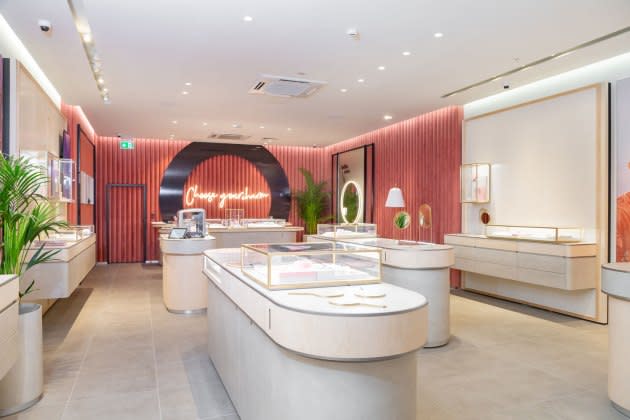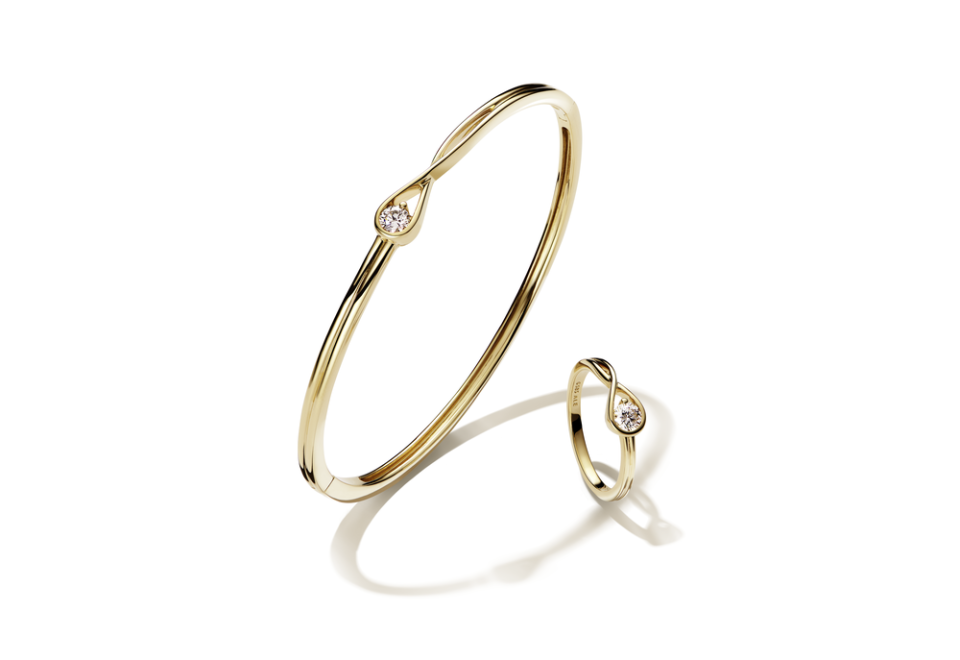Pandora Sees Record Revenue for Q2 Despite U.S. and China Headwinds

PARIS — Pandora saw its “third straight quarter of record revenue,” in the three months to June 30 despite headwinds from the U.S. and China that impacted profits both in the quarter.
The Danish jeweler said sales in the second quarter hit 5.66 billion Danish kronor, or $771.8 million, 3 percent higher compared to the corresponding period of 2021, and in line with consensus estimates.
More from WWD
Revenue was 17 percent higher than in 2019, before the COVID-19 pandemic struck.
However, the jeweler saw declines in both operating and net profits for the quarter. Net profits for the quarter fell 5.8 percent to 934 million kronor, or $127.8 million, from 992 million kronor. For the first half, however, profits leaped 19.2 percent to 1.92 billion Danish kronor, or $262.7 million, from 1.62 billion kronor on sales that increased 17.4 percent to 11.34 billion kronor, or $1.55 billion, from 9.65 billion kronor.
Chief executive officer Alexander Lacik said he was pleased with the results given fresh uncertainties brought on by the war in Ukraine and store closures related to China’s “zero-COVID” policy.
In an interview, he said the second-quarter results were in line “with how we expected the year to pan out.” He said the U.S. government’s stimulus checks amounted to “the best marketing plan ever,” but they were a one-off boost.
Overall, Pandora “managed to absorb significant headwinds in a number of areas including COVID-19-restricted China, ceasing business in Russia and Belarus, high inflation and cost pressure on energy and raw materials,” he later said on a call with analysts.
During the three-month period, the U.S. saw a 12 percent decrease compared with the second quarter of 2021 against tough comparisons with the previous year. Sales were 59 percent higher than 2019’s figures.
Performance in China continued to be impacted by the country’s strict zero-COVID policy, as lockdowns impacted stores as well as Pandora’s Shanghai online distribution center, resulting in an overall 58 percent slump in the second quarter.
Europe is where Pandora saw the most growth, with double-digit leaps across its key markets in the U.K., Italy, Germany and France, where the launch of the My Pandora loyalty program supported 13 percent growth despite weak Mother’s Day sales.
In the rest of the world, growth was strong, amounting to 26 percent overall. Mexico led the charge with a 50 percent jump to 210 million Danish kronor, or $28.68 million, while Spain was described as having “revenue the size of France” and grew 32 percent.
The second quarter was also affected by the ceasing of business in Russia and Belarus, where most of the impact was seen in wholesale distribution, and amounted to a 1 percent decrease on the quarter’s overall figures, and lower revenue from online freight.
On the whole, EBIT margin during the three months “remained strong” at 22.1 percent, Pandora said. Consensus estimates ranged from 21 percent to 24.3 percent.
The company maintained its EBIT margin guidance at 25 percent to 25.5 percent, but it added that the macroeconomic outlook “is associated with elevated uncertainty.”
Pandora shares were uneven during the day, falling 7.8 percent to 491.90 Danish kronor after the results were released before regaining lost ground by midday and closing down 6.1 percent at 501.20 Danish kronor at the end of trading.
Anders Boyer, executive vice president and chief financial officer of the Danish jeweler, insisted that gross margin remained “strong” at 76.4 percent in the quarter, despite rising commodity prices.
While the overall 2022 guidance remained unchanged, the sources of growth “will be different in the second half,” said Boyer, with Europe seeing “a more normal” trading environment. Australia, meanwhile, should have “quite easy comps due to the lockdowns” in the third quarter of 2021. China is also expected to face easier conditions but will “remain a drag,” on sales, he said.
He expects the fourth quarter to be the most profitable, “in line with normal seasonality” and with an implied EBIT guidance above 2021’s levels at 27.1 percent to 28 percent for the second half of 2022.
Hitting the lowball yearly guidance would “only come into play if there is a worsening macroeconomic environment,” Boyer said.
With COVID-19 restrictions easing across the board, except for China, consumers have returned to physical stores in force, and bolstering growth in the channel.
In the three months, wholesale distribution took a hit, shrinking 13 percent, particularly given the prominence of the U.S. in its market mix.
Third-party distribution decreased 8 percent following Pandora’s takeover of a number of wholesale accounts. The company said the consequences of Russia’s war in Ukraine could not be entirely offset by “strong performance in some of the Asian markets.”
Lacik said Pandora was on track with 100 to 150 planned openings, and the company is accelerating expansion in the U.S. and Latin America in order to offset current difficulties in China, where the focus has been on relocations rather than new stores.
Pandora’s online channel has continued to grow, and has doubled compared to 2019. Despite a return to physical shopping, there is “greater acceptance of the online store as a path to purchase” across most markets, the company noted.
Lacik cautioned against putting too much weight on the battle between online and offline.
“We have the luxury of not worrying where the final transaction happens,” said the executive, adding that the company was “agnostic” with regard to sales channels. He added that online “will grow naturally” due to incoming consumer cohorts, including a generation of digital natives.

Courtesy of Pandora
“The right question to ask is how good is the experience that we offer regardless of [where] our customers engage with us,” he continued, pointing out traffic and conversion rates as reference metrics.
He said that all touch points were important given that “many of our customers and consumers aren’t the same person,” with around 60 percent of the former being men seeking a gift for a female consumer.
Physical retail represents a more “efficient, interesting and engaging” experience than the “flat, self-select” online environment, he added.
After testing 12 stores in five key markets under the new “Evoke” concept, which is centered on fostering an omnichannel experience, the Danish jeweler saw a 40 percent leap in dwell time, which translated into sales growth. A further 35 stores in the new format are planned for the second half of 2022.
Despite inflation and fears of a recession, Pandora was “minimally holding its own” as consumers showed no sign of shifting toward lower-priced items — be it in Europe or the U.S., the CEO told analysts.
Going forward, the Danish jeweler didn’t see “any softening of consumer sentiment” in all metrics including basket size and traffic conversion, Boyer said.
Asked if prices would increase at consumer level, Lacik said it “is important for us to remain an affordable brand” and that given that “cost increase on the supply side [was] not major,” the company didn’t “feel pressured to pass on big price increases,” save for some “surgical moves” on higher-priced or more complex items.
On the product side, Lacik said the aim for newly launched “platforms” was to reach “at least five percent of revenue.”
Pandora Me, relaunched in late 2021, leapt 72 percent and took a 3 percent share of revenue in the quarter, thanks to good traction in continental Europe.
Prompted to give a breakdown of sales by category, which had not been provided since the company switched from a “product to platform” focus, he answered that “the way [Pandora] looks at it is [that] when you jump into the Moments platform, you’ll eventually end up buying a bracelet with charm, so to evaluate the soundness of a business, you should look at it combined.”
Given the company sells “between five and seven charms per bracelet,” he noted that given the number of charms they sold, which increased 9 percent over the period, meant “one would assume that the business is doing well.”
Taking 75 percent of the business and performing in a “very vital…very healthy” manner, according to the CEO, the Moments product platform and the ongoing collaboration with Marvel continued to be successful, especially with strong Mother’s Day trading. The latter accounted for 2 percent of the business in the quarter. Newly introduced Pixar designs were also a hit.
In the second half, a key launch will be the Pandora Brilliance range, the first launch in the category Diamonds by Pandora, which hinges on lab-grown diamonds and recycled silver and gold, which is debuting in the U.S. and Canada on Aug. 25.
Calling the fast-growing and already sizable lab-grown diamond market in the U.S. “a very interesting space to play,” Lacik described the new category as a “transformative move both in business and sustainability,” and that its focus is “on the self-purchaser rather than the bridal market.”
Communication assets and in-store materials have been revamped to “give a diamond feel” to the experience, the executive said, while putting the accent on the “quite unique proposition” in terms of sustainable credentials and accessible price points.
Lacik demurred on sharing further developments for the category, but said that Pandora was gearing toward adding more collections under this new category.
Separately on Tuesday, Pandora revealed the appointment of Mary Carmen Gasco-Buisson as chief marketing officer. She will bring “standout experience in building, expanding and turning around global consumer brands” when she joins the Danish jeweler in the fall, said Lacik.
Formerly a global vice president at Unilever, the new executive was previously consumer health CEO at P&G Ventures; and global marketing and innovations director for Hugo Boss Fragrances. She also held an executive role at the venture capital firm M13.
Sign up for WWD's Newsletter. For the latest news, follow us on Twitter, Facebook, and Instagram.